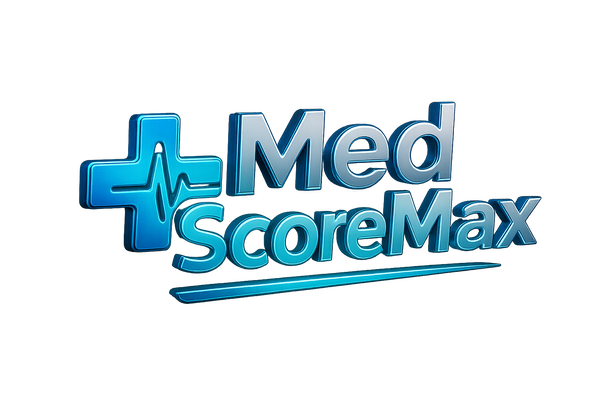![Ultimate USMLE Step 1 Preparation Guide [2025 Edition] - MedScoreMax](http://www.medscoremax.com/cdn/shop/articles/ChatGPT_Image_Sep_27_2025_at_05_22_54_AM.png?v=1759138746&width=1100)
Ultimate USMLE Step 1 Preparation Guide [2025 Edition]
Share
Preparing for the USMLE Step 1 is one of the most crucial milestones for medical students aspiring to practice medicine in the United States. With the exam transitioning to pass/fail, the focus has shifted from just scoring high to mastering clinical concepts, retaining knowledge, and ensuring readiness for Step 2 CK and residency applications. This 2025 USMLE Step 1 Preparation Guide provides a structured approach, high-yield resources, study schedules, and strategies to help you maximize your performance.
👉 Don’t miss out on this high-yield resource: USMLE Step 1 Recalls & Past Papers 2025-2026 (90% Repeat Questions)
📌 Why USMLE Step 1 Matters in 2025
Although the Step 1 exam is now reported as Pass/Fail, it remains essential because:
-
It tests your foundational medical knowledge.
-
A strong Step 1 performance ensures smoother transition to Step 2 CK.
-
Residency programs may indirectly assess preparation by reviewing your school transcripts and performance trends.
-
Early mastery of Step 1 content reduces burnout for Step 2 CK.
📚 Best Resources for USMLE Step 1 (2025 Edition)
Selecting the right resources can make or break your Step 1 journey. Here are the most recommended materials:
| Resource Type | Recommended Tools |
|---|---|
| Question Banks | UWorld, AMBOSS, Kaplan QBank |
| High-Yield Notes | First Aid for USMLE Step 1 (2025 Edition), Boards & Beyond notes |
| Video Lectures | Pathoma, Boards & Beyond, Sketchy Medical |
| Flashcards (Spaced Repetition) | Anki (Zanki, Lightyear, Anking decks) |
| Recalls & Past Papers | USMLE Step 1 Recalls & Past Papers 2025-2026 |
📅 USMLE Step 1 Study Schedule (2025)
A structured study plan ensures consistent progress. Here’s a 12-week high-yield schedule:
Phase 1: Foundation Building (Weeks 1–4)
-
Review First Aid & Pathoma.
-
Watch Boards & Beyond videos for weak subjects.
-
Do 40–60 UWorld questions daily.
-
Make Anki a daily habit (1–2 hours).
Phase 2: Integration & Recall (Weeks 5–8)
-
Revise high-yield notes & mistakes.
-
Solve 80–100 UWorld/AMBOSS questions daily.
-
Take 1 practice NBME per week.
-
Use USMLE Step 1 Recalls for last 10-year patterns.
Phase 3: Final Review (Weeks 9–12)
-
Focus on weak systems.
-
Revise pharmacology & microbiology mnemonics.
-
Take NBME 30, 31, 32 for readiness check.
-
Simulate 8-hour exam conditions.
🔑 High-Yield Topics for USMLE Step 1 (2025)
The exam consistently tests recurring high-yield concepts. Based on recent recalls:
| Subject | High-Yield Focus |
| Anatomy | Brachial plexus lesions, heart embryology, abdominal blood supply |
| Physiology | Cardiac cycle, renal physiology, respiratory mechanics |
| Biochemistry | Rate-limiting enzymes, metabolic disorders, vitamins |
| Microbiology | Gram-positive cocci, viruses (DNA vs RNA), parasites |
| Pathology | Neoplasia, cardiovascular disease, hematology |
| Pharmacology | Autonomic drugs, antibiotics, antineoplastics |
| Immunology | Hypersensitivity types, immunodeficiencies, vaccines |
💡 Pro Tip: Use USMLE Step 1 Past Papers 2025-2026 to identify 90% repeated questions.
🧠 Active Recall & Spaced Repetition Strategy
One of the most effective learning strategies is Active Recall combined with Spaced Repetition:
-
Use Anki decks daily.
-
Review wrong UWorld questions repeatedly.
-
Test yourself with recall-based past papers.
-
Apply the Pomodoro technique for efficiency.
📊 Comparison of QBank Efficiency (2025)
| QBank | Strengths | Weaknesses |
| UWorld | Gold standard, best explanations, NBME-like | Expensive, time-consuming |
| AMBOSS | In-depth library, great integration | Interface not as intuitive |
| Kaplan QBank | Good for beginners, detailed explanations | Not as exam-like |
| Past Papers Recalls | 90% repeat rate, direct recall | Should be used alongside QBanks |
👉 Get the most reliable recall set for 2025 here: USMLE Step 1 Past Papers & High-Yield Recalls
⚖️ Pass/Fail Impact in 2025
With Step 1 being Pass/Fail, residency programs now:
-
Place greater emphasis on Step 2 CK scores.
-
Review clinical performance & research output.
-
Still consider Step 1 preparation as an indirect measure of knowledge.
Thus, mastering Step 1 is not optional, but essential.
✅ USMLE Step 1 Test-Taking Strategies (2025)
-
Time Management: 40 questions per block; aim for ~75 seconds/question.
-
Flagging Strategy: Don’t over-flag; limit to 5–6 per block.
-
Answer Elimination: Remove distractors systematically.
-
Break Planning: Use scheduled breaks wisely (10–15 minutes every 2 blocks).
📖 Final 2 Weeks Before Step 1
-
Revise First Aid cover-to-cover.
-
Review all wrong UWorld questions.
-
Practice with NBMEs & UWSAs.
-
Memorize pharmacology & microbiology charts.
-
Use Step 1 Recalls 2025 daily.
🔗 Helpful Backlinks & Resources
❓ USMLE Step 1 FAQs (2025 Edition)
Q1: Is Step 1 harder in 2025 since it’s pass/fail?
A: The difficulty hasn’t changed much, but the pressure has shifted. You must still prepare rigorously because Step 2 CK carries more weight.
Q2: How many months should I prepare for Step 1?
A: On average, 4–6 months of structured study is recommended, with 10–12 weeks of intensive preparation.
Q3: Can I pass Step 1 without UWorld?
A: Possible, but not advisable. UWorld is considered the gold standard. Pair it with Recalls & Past Papers for maximum efficiency.
Q4: How many practice exams should I take?
A: At least 3–5 NBME exams plus UWSA 1 & 2 are recommended.
Q5: What percentage of questions repeat from past papers?
A: Recent recalls suggest up to 90% repeat rate. That’s why using updated recalls is crucial.
🏁 Conclusion
The USMLE Step 1 (2025) remains a challenging yet conquerable exam. With the right resources, strategy, and discipline, you can not only pass but also build a strong foundation for your medical career. Prioritize active recall, spaced repetition, and high-yield question practice.
👉 Start your preparation with the most trusted resource: USMLE Step 1 Recalls & Past Papers 2025-2026
Stay consistent, trust your schedule, and success will follow.
